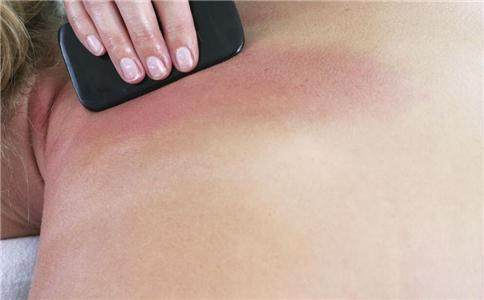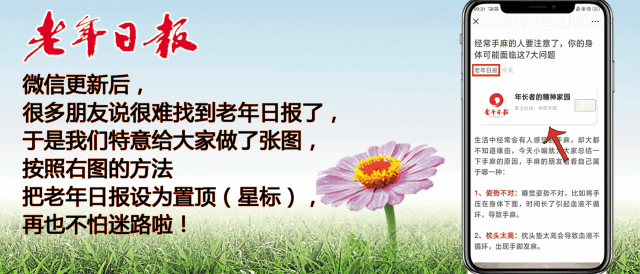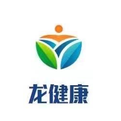
Image Source: Internet
Spring is a season of vitality, with plants sprouting and all things growing.
As Yang Qi rises, many organs in the body accumulate internal heat. When this internal heat is released, it can lead to dryness in spring, causing various discomforts. Gua Sha can be tried to alleviate these discomforts.
A Gua Sha Board, Half a Traditional Doctor
Gua Sha health care is actually not difficult; items like combs, enamel cup lids, and even rounded spoons can be used for Gua Sha, making it simple and easy to operate.Common Cold: Dazhui (Great Vertebra) PointDazhui Point: Located in the depression below the highest protrusion of the cervical vertebrae, more pronounced when the head is lowered.Method: Scrape from top to bottom for about 5-10 minutes each time, until the back of the neck feels warm.Lower Back Pain: Hands + BackMethod: First apply Gua Sha oil to the lower back, then slowly scrape down both sides of the spine.The reflex area for the lower back on the hand is in the center of the back of the hand; apply a little Gua Sha oil and scrape slowly from the wrist to the tip of the middle finger.Scrape while searching for areas of pain, nodules, or muscle tension, for about 15-30 minutes each time.Breast Nodules: Scrape Both BreastsMethod: Apply a little moisturizer, then hold the scraping board at a 45-degree angle to the chest, scraping slowly from the base of the breast towards the nipple, using gentle pressure for comfort, for about 5-10 minutes each time.Note: Do not scrape the nipple, areola, or any unexplained lumps in the breast.Digestive Issues: Scrape Tianshu (Heavenly Pivot) PointTianshu Point: Located two inches beside the navel.Common Diarrhea: For mild diarrhea, use the scraping board to press and rub the Tianshu point counterclockwise, or press the Zhongwan point (4 inches above the navel).Constipation: Use the scraping board to rub the Tianshu point in a clockwise direction until a feeling of warmth in the abdomen is achieved.Dry Eyes: Scrape Around the EyesMethod: When the eyes are fatigued, use the scraping board to gently press around the eyes at the Jingming point (inner corner), Cuanzhu point (eyebrow), Yuyao point (middle of the eyebrow), and Taiyang point (outer corner), for 1-2 minutes at each point.You can also scrape around the eye socket directly to relieve fatigue and improve vision.Fatigue: Baihui (Hundred Meetings) Point + Taiyang (Sun) PointBaihui Point: Located at the intersection of the midline of the head and the line connecting the tips of both ears.Taiyang Point: Located in front of the ear, above the outer corner of the eye, on both sides of the forehead.Method:First, comb the hair from the front hairline back, which can help wake up the mind in the morning;Second, scrape from the center of the head in all directions, relaxing the entire head around the Baihui point;Third, scrape forward from the center of the head, backward from the center, and backward from the sides towards the Taiyang points. This promotes blood circulation in the head, clears the mind, and enhances memory.Note: Scrape or rub lightly whenever possible.Neck and Shoulder Pain: Fengchi (Wind Pool) Point + Jianjing (Shoulder Well) PointFengchi Point: Located on both sides of the large muscle at the back of the head, parallel to the earlobe; the two depressions at the back of the head when the head is lowered are this point.Jianjing Point: Located at the midpoint of the line connecting the Dazhui and the acromion, at the highest point of the shoulder.Method: Scrape the Fengchi point from top to bottom along the skin until reaching the Jianjing point, then scrape along the shoulder from inside to outside, scraping thirty times on fleshy areas and twenty times on bony areas.Note: Adjust the angle with the wrist, moving the forearm to guide the scraping board.Blood Nourishing and Liver Supporting: Xuehai (Sea of Blood) Point + Sanyinjiao (Three Yin Intersection) PointXuehai Point: Bend the knee and cover the kneecap with the palm, fingers pointing up, with the thumb at the fleshy part below.Sanyinjiao Point: Located on the inner side of the lower leg, four finger widths above the ankle joint.Method: Scrape from the inner side of the lower leg at the Xuehai point up to the Sanyinjiao point, scraping from bottom to top without stopping in between, until the skin turns red and purple petechiae form. Regular scraping of the Sanyinjiao point can nourish blood and support the liver.Note: For lower limb scraping, start with the outer side from top to bottom, then scrape the back (the bladder meridian area), and finally scrape the inner side.Spring Excess Fire: Taichong (Great Surge) Point + Xingjian (Moving Between) PointSymptoms: Gum pain, sore throat, mouth ulcers, thirst, irritability, yellow and red urine, dry stools, red tongue with yellow coating.Xingjian Point: Located between the first and second toes on the dorsal side of the foot.Neiting Point: Located between the second and third toes on the dorsal side of the foot.Method: When scraping, use the blunt edge of the scraping board to press the Xingjian and Neiting points for 1-2 minutes each, then scrape upwards (can be combined with Gua Sha oil or massage oil), applying a stronger pressure within tolerable limits until petechiae appear or scrape 50 times.Spring Deficiency Fire: Scrape the Five Lines on the BackSymptoms: Flushed complexion, thirst without desire to drink, dry cough with little phlegm, low fever, red tongue with little coating, five hearts feeling hot.Method: Scrape the five lines on the back, including the central Du meridian and the first side line of the bladder meridian, 1.5 inches from the Du meridian, and the second side line of the bladder meridian, 3 inches from the Du meridian.When scraping, apply light pressure and scrape slowly, with longer stimulation time for each area, to invigorate the body’s righteous Qi and restore vitality.
Three Colors of Petechiae Corresponding to Different Conditions
Bright Petechiae: If the red is not very deep, it indicates the presence of wind-cold in the body, which is the most normal color.Dark Red or Purple Petechiae: This often indicates internal damp-heat.Petechiae that are Purple-Black: Indicates severe stagnation in the body. The severity of petechiae does not completely correlate with the disease and will gradually dissipate, so there is no need to worry excessively.
Areas Not to Scrape
Gua Sha is a relatively safe health practice, but there are still many contraindications. Which groups of people should avoid Gua Sha? Which areas should not be scraped? We need to know.Do Not Scrape the Sides of the NeckClinical observations in TCM have found that scraping the neck carries certain risks, especially on both sides of the neck, which should not be scraped lightly!This is because the middle part of the sternocleidomastoid muscle contains the carotid sinus, which is a pressure receptor. Stimulating it can cause a sudden drop in blood pressure, leading to dizziness and faintness.Continuous stimulation may lead to more serious consequences, especially for those with poor health.When scraping, avoid the sides of the neck, and the same applies to massage.Contraindicated GroupsPatients with cardiovascular and cerebrovascular diseases, the elderly and frail, those with skin allergies, leukemia, allergic purpura, thrombocytopenia, cancer, skin inflammation, or wounds and scars on the skin, as well as pregnant women and women during menstruation, should avoid Gua Sha.Of course, even healthy individuals should not scrape every day. It is essential to allow the body to have a recovery period, waiting until the marks from the last scraping have disappeared before proceeding.
Gua Sha Tips
1. Hold the scraping board at a 45° angle or less to the skin; the flatter the scraping, the more comfortable it is; do not scrape aggressively.
2. Many people believe that scraping must produce petechiae, and the more petechiae, the better, which is incorrect. When a person has a cold, fever, or fatigue, it is easier to produce petechiae; healthy individuals do not easily produce petechiae, only skin redness.
3. Scraping should not be done back and forth; instead, scrape from top to bottom and from inside to outside, in a single direction, extending the scraping distance as much as possible. This follows the direction of arterial blood circulation to promote blood flow.
4. It is advisable to scrape 3-5 areas each time, for 3-5 minutes per area, not exceeding half an hour in total.
5. Different pressures will produce different effects; light pressure is for “tonifying,” while strong pressure is for “draining.” Generally, people do not know whether their constitution is deficient or excess, so it is best to maintain an average pressure, known as “balanced tonification and draining.” Wait 3-5 days after the first scraping before performing the second treatment.
6. After Gua Sha, choose warming and sweat-inducing foods, and avoid wind; it is not recommended to bathe within an hour.
Copyright Notice: Respect intellectual property rights; copyright belongs to the original author. The article is sourced from authorized writers or the internet, and other materials on the internet cannot verify the author. If there is any infringement, the original author is requested to contact us for public acknowledgment or removal.

Editor: Wenwen
Reviewer: Li Jia
Cooperation Hotline: 13329518266

